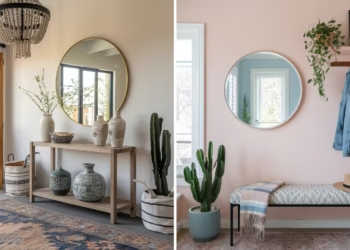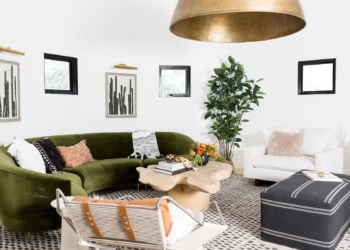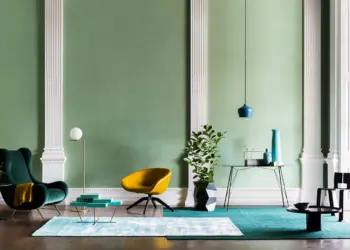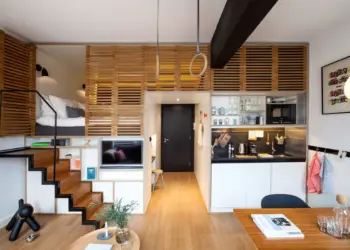When it comes to the world of interior design, creativity, and expertise go hand in hand. Transforming spaces into beautifully designed, functional areas requires not only an eye for aesthetics but also a solid foundation of knowledge. In this comprehensive guide, we will delve into the interior design education requirements that will pave your way towards becoming a skilled and sought-after Interior designer.
Table of Contents
What Do Interior Designers Do?
Interior designers stand as the creative luminaries responsible for the alchemy of enhancing interior spaces. Their canvas extends across an array of projects, spanning from residential abodes and corporate offices to the opulent domains of hotels, restaurants, and retail havens. Within this domain of artistic ingenuity, interior designers orchestrate layouts, curate color palettes, handpick furnishings, and ensure that the spaces they mold are not only visually captivating but also functionally impeccable.
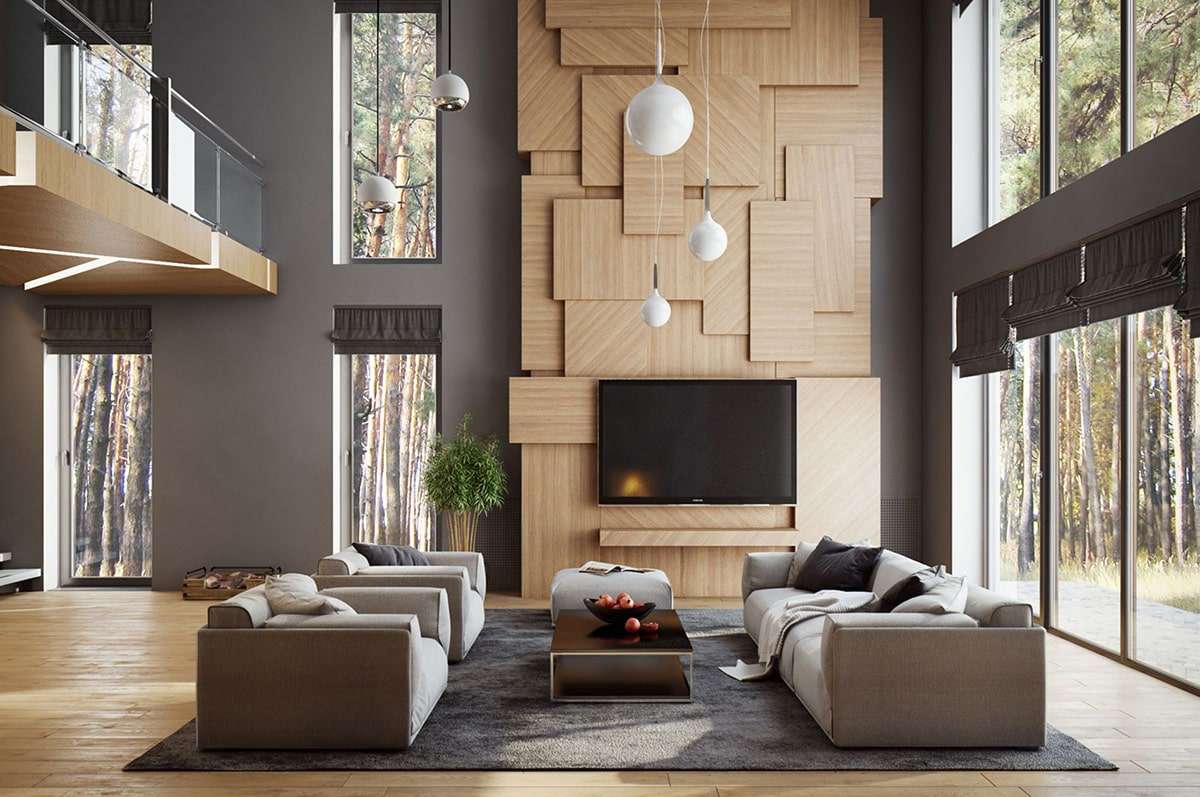
Embarking on the Voyage Toward Becoming an Interior Designer
Educational Prerequisites
The inaugural stride on your odyssey toward a flourishing interior design career involves acquainting yourself with the educational prerequisites. Interior design, as a venerated profession, holds education and practical acumen in high esteem.

Digging Deeper into the World of Interior Design Education
Interior design education transcends the mere selection of color palettes; it entails an immersive plunge into multifarious facets of design. This encompasses spatial strategizing, the embrace of architectural tenets, and a profound understanding of the psychology that underlies the interplay of colors. It is through this journey that aspiring designers hone their craft, mastering the art of fashioning spaces that effortlessly meld the realms of aesthetics and functionality to cater to the unique aspirations of their clients.
The Significance of High School Preparation
The prelude to your interior design voyage may commence during your high school years. Here, the cultivation of your foundational knowledge is imperative. Engaging in courses tethered to the world of art and design lays a robust groundwork. Simultaneously, the development of your prowess in drawing and digital dexterity serves as indispensable tools that will accompany you throughout your professional voyage.
Embarking on the Bachelor’s Odyssey
For many aspirants, the journey unfolds through the pursuit of a bachelor’s degree in interior design or a cognate field. These comprehensive programs, often spanning four years, delve into a diverse spectrum of subjects, encompassing:
Core Curriculum
- Spatial strategizing
- The lexicon of color theory
- The nuances of furniture design
- Proficiency in architectural drafting
- Comprehension of interior materials and finishes
Specialization Options
Within the purview of bachelor’s degree programs, a tantalizing array of specializations awaits. The design enthusiast can opt to specialize in residential design, commercial design, or even the environmentally-conscious realm of sustainable design. These specializations offer a portal to laser-focused expertise in areas aligned with one’s passions.
Elevation through Master’s and Beyond
While a bachelor’s degree typically serves as the gateway, certain design virtuosos ascend to the echelons of master’s degrees or attain advanced certifications. These advanced pursuits not only augment their skill set but also embellish their marketability, rendering them veritable maestros in the world of interior design.
The Aegis of Accreditation
When traversing the labyrinthine landscape of educational institutions, discernment is paramount. Opting for programs accredited by the Council for Interior Design Accreditation (CIDA) is an astute choice. Such accredited programs not only adhere to exacting standards of quality but also bestow upon their graduates a competitive edge within the employment panorama.
Anchoring in Practical Experience
The Role of Internships
In the symphony of interior design education, practical experience occupies a prominent refrain. Many educational programs necessitate students to complete internships within esteemed design ateliers. These internships become veritable crucibles, allowing fledgling designers to forge their skills, culminating in hands-on encounters with real-world projects.
Casting a Powerful Portfolio
Throughout one’s educational sojourn and internships, the meticulous compilation of a portfolio emerges as a potent instrument. A well-organized portfolio stands as a resplendent beacon when traversing the terrain of employment or client engagements, showcasing one’s mettle through a visual narrative.
Weaving Networks and Immersing in Industry
Navigating the Industry through Networking
Within the dynamic realm of interior design, networking emerges as the sine qua non. Membership in professional organizations and active participation in industry gatherings serve as the conduit to establish connections with seasoned designers and prospective employers.
Certification and Licensure
Understanding Certification
While certification doesn’t universally assume the cloak of obligation, it exerts a profound influence on one’s credibility and employability. The National Council for Interior Design Qualification (NCIDQ) proffers a certification examination that serves as the crucible for assessing an aspirant’s knowledge and competence within the interior design sphere.
Navigating the Labyrinth of Licensing
The labyrinthine corridors of licensing requisites for interior designers wind their way through the variegated regulations that vary from state to state. In select domains, interior designers must attain licensure to practice independently. Prospective designers would be wise to scrutinize the licensing statutes within their state of intended practice.
The Value of Professional Fraternity
Harnessing the Power of Professional Associations
The mantle of professional associations, such as the American Society of Interior Designers (ASID) and the International Interior Design Association (IIDA), confers a multitude of benefits. These organizations proffer an arsenal of resources, opportunities for networking, and a sense of camaraderie within the industry’s bustling thoroughfares.
Pioneering Alternative Pathways
Venturing Beyond the Beaten Path
While the traditional educational conduit stands as the citadel of choice for many, alternative pathways beckon the intrepid few. Some individuals chart unique trajectories to interior design, forging unconventional avenues.
Self-Directed Learning and Online Courses
The digital age unfurls a tapestry of self-education and online courses that harbor a wealth of knowledge. Yet, it is imperative to supplement these virtual forays with hands-on experience and a portfolio that shines resplendently.
Continuing Education for Established Designers
Even after the inauguration of a flourishing career, the quest for knowledge remains unabated. Many designers choose to embrace the mantle of continuing education, thereby ensuring they remain abreast of industry trends and innovations.
Embarking on Your Interior Design Odyssey
In conclusion, the voyage to becoming an interior designer unfurls as an amalgamation of education, practical immersion, and an unbridled ardor for crafting spaces that harmonize functionality with aesthetic allure. Whether one opts for the traditional bastion of formal degree programs or elects to pioneer alternative routes, the crux remains a perpetual commitment to learning, evolution, and the ever-inspiring universe of design.
FAQs
What Constitutes the Fundamental Requisites for Aspiring Interior Designers?
Aspiring interior designers typically require a bachelor’s degree in interior design, practical experience gained through internships, and potential certification, contingent on the regulations of their respective states.
Is It Possible to Pursue Interior Design Without Formal Education?
While unconventional pathways exist, most employers and clients tend to favor designers with formal degrees and relevant training.
How Long Does the Journey to Acquiring a Bachelor’s Degree in Interior Design Typically Span?
The pursuit of a bachelor’s degree in interior design typically encompasses a four-year journey.
Is Certification Imperative for an Interior Designer’s Career?
Certification, such as the NCIDQ certification, is not universally obligatory but can substantially augment one’s professional credibility and prospects.
Are Scholarships Available for Aspiring Interior Designers?
Indeed, a plethora of scholarships and grants cater to students pursuing degrees in interior design, easing the financial burden of education.
What qualifications do you need for interior designer?
Qualifications for an interior designer typically include a bachelor’s degree in interior design or a related field, practical experience gained through internships, and optionally, certification depending on the region.
Is interior design a good job?
Interior design can be a fulfilling career for those passionate about creating aesthetically pleasing and functional spaces. It offers creativity and the potential for a good income.
What education is needed to become an interior designer in Canada?
In Canada, becoming an interior designer usually requires a bachelor’s degree in interior design from an accredited institution. Accreditation is essential for professional recognition.
Is interior design right for me?
Determining if interior design is the right fit involves assessing your passion for design, creativity, attention to detail, and your ability to work well with clients to bring their visions to life.


